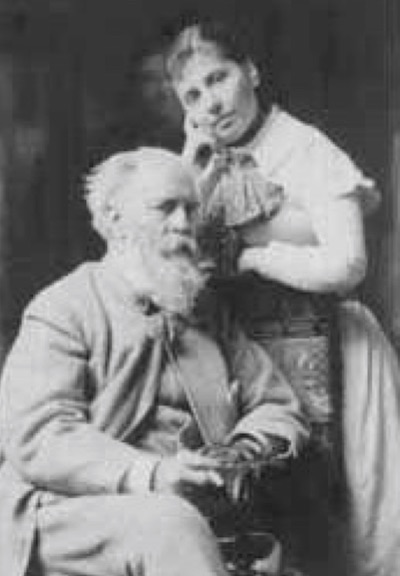Historic Childs: Popular Images of Yesteryear, Part 1
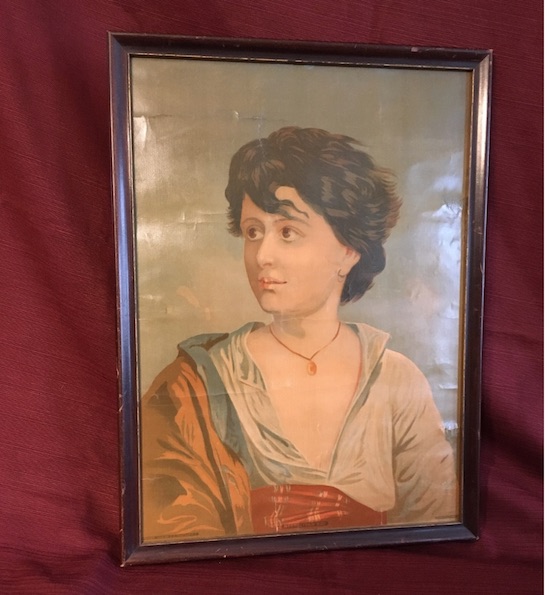
This print, 13×18 inches, which has hung in the Ward House at the Cobblestone Museum for years is entitled, “Neapolitan Boy.” It is a chromo-lithograph printed on textured paper to resemble canvas. Also noted on this copy is “copyright 1881 by E.G. Rideout NY” and “Cadwell Lith. Co.”
By Doug Farley, Cobblestone Museum director, and Bill Lattin, retired museum director
Vol. 2 No. 48
GAINES – This is the first in a series of articles about four paintings/prints in the Cobblestone Museum collection that were very popular long ago. For many years now, the print shown above has hung in the Museum’s Ward House.
This image is also known as “Neapolitan Fisher Boy.” Our black and white copy shows the original painting from which this was taken. The artist that created this was Gustav Richter who was born in Berlin in 1823. He studied painting in Berlin, Paris and Rome, making frequent trips to Italy during his career. The following quote is taken from an art book published in 1899 entitled, “The Crown Jewels of Art.”
“The sketch for this picture lay for years in the artist’s studio uncared for. When at last made into a picture and placed on exhibition, it won not only public admiration and praise but the approbation of artists and critics. The large soft eyes of the beautiful boy, which seem to possess seer-like powers in their angelic sweetness, and his half-forlorn, half-happy expression, call forth feelings of both love and sympathy.”
It is believed the painting was completed in 1870 when Richter was considered to be an outstanding portrait painter.
Gustav Richter (1823-1884) and his wife, Cornelie, Wikipedia Commons
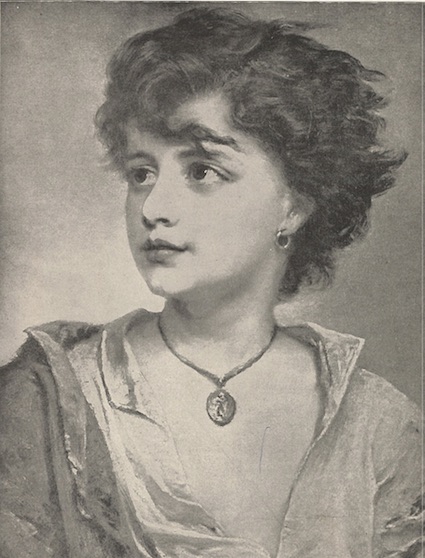
In this black & white 1899 reproduction of the original painting through a half tone process of engraving we see an exact likeness. All other pictures in this article show slight variations.
In 1876, Richter sent this portrait for exhibition at the Centennial Exposition in Philadelphia. It immediately won great acclaim and immense popularity with the American public. Consequently, this image was wildly copied by both Sunday Painters and professionals, alike.
Print makers, likewise, seized on to this picture and thereby thousands of copies were made. It was a fad! We can only wonder in today’s world what there was about this “pretty boy” with wind swept hair, necklace and earring that so infatuated the aesthetic senses in people during the late 1870s and 1880s. (Surely no American boy of that time would have had an earring.) The public must have simply passed this off as “old-world,” a term much more frequently used in 19th century America.
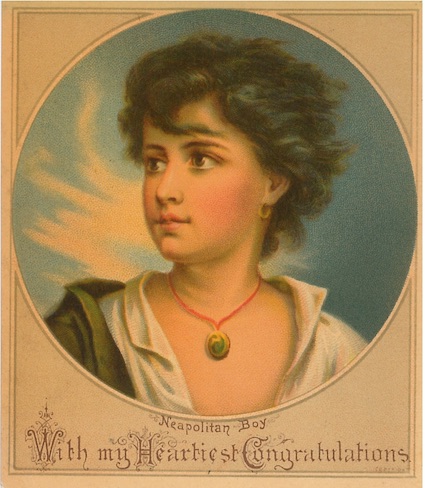
A small litho card 4×5 inches which was probably a complimentary gift.
Thanks to Dee Robinson for research of facts about the artist. We are going to conclude this article with examples for the Neapolitan Fisher Boy which are in the collection of Bill Lattin. He states that in antiquing this picture occasionally appears in antique shops.
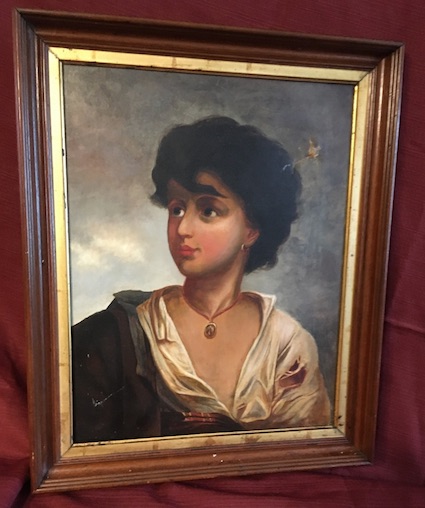
Oil painting on canvas, 14×18 inches, probably by a Sunday Painter, circa 1880
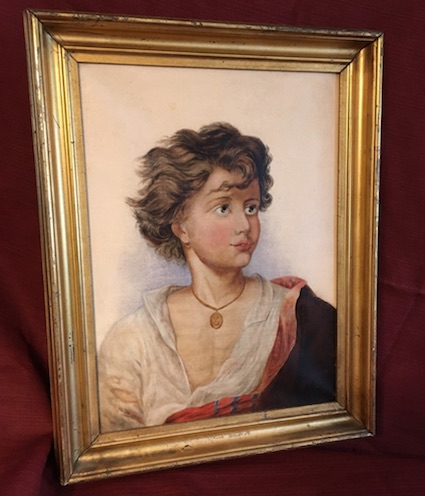
Oil painting on canvas, 13×17 inches, circa 1880. We note here the boy is facing to the right. This indicates that the artist who copied this may have worked form a print. In the printing process the image could have reversed.
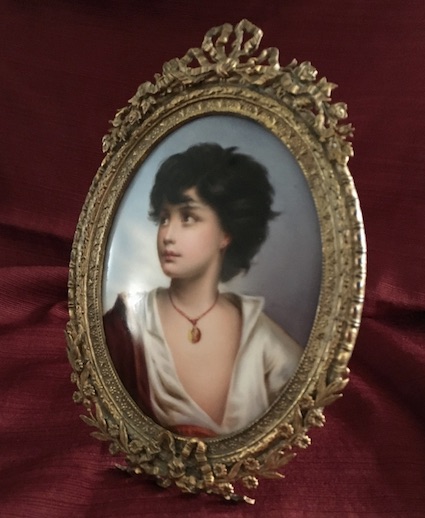
Painting on porcelain in original brass frame, 5” high, circa 1885. In today’s antique market, a painting like this should retail for around $300.
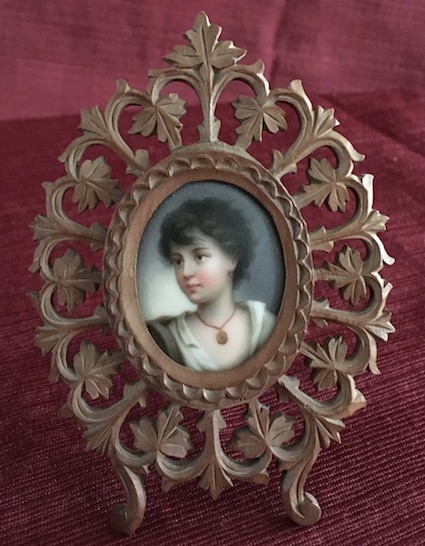
Painting on porcelain in Florentine frame, 1 ½” high, circa 1885

























